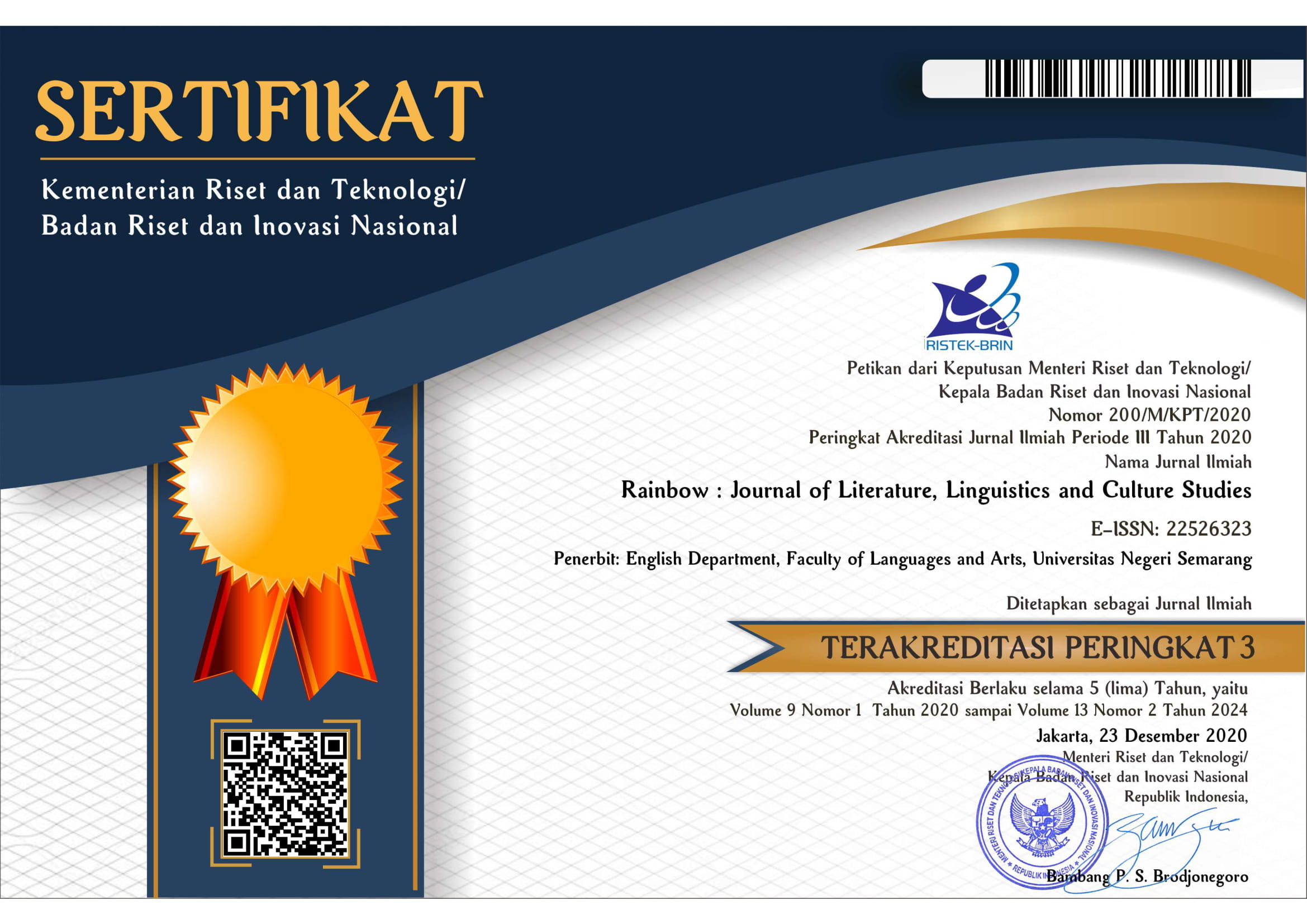Lexical verbs of hedging in English research articles by native and non-native speakers
Abstract
This study aims to compare verb variation and the functions of hedges used in English scientific research articles written by English native speakers (NS) and non-native speakers from Indonesia (NNS). The data were collected from a corpus of 30 international journal articles. The analysis was conducted quantitatively using a normalization system and statistical tests to determine the frequency and distribution of lexical verbs and qualitatively using Palmer’s (2001) and Hyland’s (1996) hedging model to identify the forms and specific functions of the hedges. The findings demonstrate that both NS and NNS used speculative, deductive, quotative, and sensorial verbs as hedges. However, NS used speculative and sensorial verbs more frequently, while NNS used deductive and quotative verbs more frequently. Statistically, the frequency and distribution of hedges in the two categories of writers were not significantly different. Both NS and NNS tend to use lexical verbs to protect themselves as writers by limiting personal commitments and to protect their readers by anticipating rejection based on subjectivity. These findings contribute to the understanding of hedging use in academic writing by NNS from Indonesia and provide implications for English language teaching and learning.
Copyright (c) 2023 Dian Budiarti, Tofan Dwi Hardjanto, Ihsan Nur Iman Faris

This work is licensed under a Creative Commons Attribution 4.0 International License.







